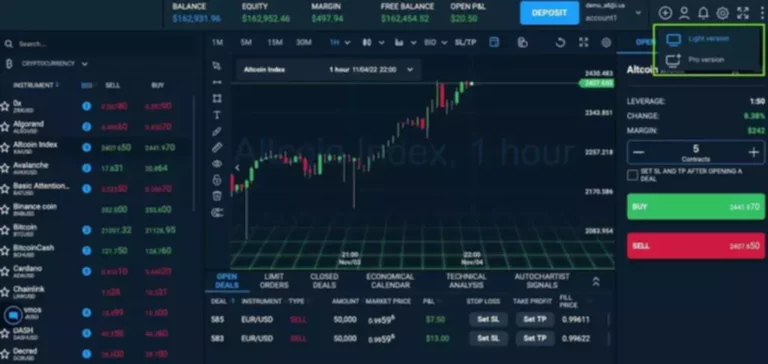To identify risk categories, it’s worth examining historical data to pinpoint common sources of concern — this, in turn, allows companies to create a priority list of categories from lowest to highest risk. When there is an adequate control in place, it might reduce it from a 3 to a 2. Your AML process should evaluate these factors over time to see if the risks are increasing, decreasing, or stable. Most organizations will use a sliding scale of 1 to 3, with 1 representing a low inherent risk and 3 indicating a high inherent risk.
There are two types of risk assessments required as part of a risk based approach. These are a companywide risk assessment and risk assessments of individual transactions. A money laundering risk assessment is a process that analyses a business’s risk of exposure to financial crime. The process aims to identify which aspects of the business put it at risk of exposure to money laundering or terrorist financing. It achieves this by monitoring and assessing known vulnerabilities, also commonly referred to as Key Risk Indicators (KRIs). There is a multitude of ways that risk assessments can hone in on potential money laundering risks throughout the customer onboarding process, but a focus on KYC helps build a strong foundation for combating suspicious applications.

Doing so will lower your risk of money laundering activity and help you meet regulatory requirements. Your risk scores (low risk, high risk, highest risk) will then be up-to-date and help keep you compliant with AML regulations. When you run your risk assessment model, you will be able to determine a risk rating and risk range for your clients, judging if they are low, medium or high risk for money laundering. Taking this risk-based approach helps you nurture business relationships with legal clients and lower your overall risk of violating AML regulations. Businesses must pay particular attention to any high-risk activities when conducting a risk assessment. Each year, the UK government publishes a National Risk Assessment (NRA) that outlines the latest trends in money laundering and terrorist financing.
Consider the areas where you conduct business, the size of those populations, and the people that live there. The next step is to classify the risk level for each of the KRIs you identified. Having adequate compliance staff is essential to the success of any AML program. Ensure that you have the appropriate number of staff available and that they have adequate training. The chief compliance officer will manage the training program and determine the qualifications the staff should have. The frequency that an SRA needs to be completed and its level of comprehensiveness depends on the risk profile of the institution, and how that risk profile is changing overtime, as well as considering internal resource availability.

As such, anyone who conducts an AML risk assessment will be carefully inspecting the safeguards that are in place to protect the organization and its customers from suspicious new accounts. This concerns how the AML risk assessment fares when it focuses on the process of signing up new customers and setting up their accounts. The risk level that comes from customer onboarding can be mitigated by ensuring that the best-practice KYC checks are in place as a large part of a greater risk assessment program. You conduct an AML risk assessment by determining risk factors, gathering the relevant information accordingly, and then compiling the results and reaching conclusions about your organization’s money laundering risk level. AML360’s regulatory technology automates the money laundering risk assessment and reduces human resourcing costs. Sometimes after completing the initial risk assessment, you might come across or be provided with additional information about your client.

We’ve created a comprehensive AML roadmap to help you navigate the compliance landscape, supported by several financial crime prevention courses in our Essentials Library. Still, the ideal time to start the process is just before establishing the relationship to ensure more control over risk mitigation. At that stage, neither party has fully committed themselves to the relationship. If a customer poses a higher risk or if something appears to be suspicious with some part of a service, it is always possible to onboard the customer by providing less risky services. The next thing to establish is whether the customer is a politically exposed person (PEP).
You may glean other clues from sector-specific guidelines published by the relevant regulatory body. It is also imperative that you document everything, including your thought processes. Identifying risk is not a one-off process – it is simply a snapshot of the situation. As information constantly changes, it should always be updated to remain relevant. Should be completed and updated by somebody with comprehensive knowledge of the firm, its services and its clients, for example the Money Laundering Compliance Officer, Money Laundering Reporting Officer, or senior management team. However, by integrating reliable risk assessment frameworks as part of a more significant AML foundation, companies can set themselves up for AML success.
- A money laundering risk assessment is a process that analyses a business’s risk of exposure to financial crime.
- For more information about how Unit21 can play a part in helping your organization identify suspicious transactions or potential bad actors, schedule a demo today.
- It is also imperative that you document everything, including your thought processes.
- This information will determine the best way to monitor transactions, validate identities, and file suspicious activity reports.
In such circumstances you must consider the additional information and re-visit the initial (or any subsequent) risk assessment. This is also part of your duty to conduct ongoing monitoring under regulation 28(11), to make sure that any transactions are consistent with your client’s business and risk profile. The next key task is for the firm to identify what controls are proportionate to bring the identified inherent risk down to a residual What Is AML Risk Assessment risk level that aligns to the firm’s AML & CTF risk appetite. The acid test for the controls is do they alleviate the probability of the risk happening, reduce any impact and ultimately see the risk rating reduce to an acceptable risk level for the firm. On occasions, having evaluated the inherent risks, firms will identify that some form of corrective action is required to remedy a highlighted shortfall in a procedure and / or control.
The AML/CFT business risk assessment report will guide the development and implementation of policies, procedures and controls. An AML/CFT risk assessment measures the level of exposure inherent in a business for unwittingly facilitating a financial crime. The outcome of a money laundering risk assessment is a report highlighting higher-risk areas. AML360 has developed AML risk assessment software with AML regulatory technology. Maintain your business money laundering risk assessment with an online account. Configurations identify individual characteristics of business operations with higher exposure.
Our monthly email provides best practices, expert opinions, industry insights, news and key trends in regulatory compliance training, digital learning, EdTech and RegTech. It is also important to remember that the duty to report goes hand in hand with an obligation to avoid doing anything that may tip off the potential subject of a SAR/STR. Fulfilling the duty to report should happen as soon as the suspicion arises, so long as the suspicion is reasonably well-grounded. Where suspicion is well-grounded, don’t look to investigate further before reporting. Depending on the jurisdiction, reporting happens through a formal Suspicious Activity Report (SAR) or Suspicious Transaction Report (STR). A company’s Business Risk Assessment (BRA) is a living document that forms part of its AML/CTF Policies and Procedures.
The main purpose of conducting a risk assessment is to challenge the facts in front of you. To achieve this, you may need to cross-reference facts, double-check consistency and conduct additional research. You should ask yourself whether any transactions or dealings with the client could be hidden or anonymised and whether your actions could assist with that activity. When looking at the risk of transactions, you should consider the whole picture.
Anyone assessing AML risks must understand the profiles of the given organization’s customers and where those customers are operating from. In fact, they should know as much as possible about where the organization itself is operating from, as well, because certain locations are considered more high-risk than others. The risk assessor must determine how the organization carries out https://www.xcritical.in/ its business operations and what AML precautions are in place to avoid the sale of products/services that can be exploited by money launderers. There are many other factors that dictate whether an AML risk assessment is a requirement or just an option, and the best way to determine which extreme applies is to research the background of each organization on a case-by-case basis.
This document is to help you understand your obligations and how to comply with them. For example, Outlook has an “Other” tab, and Gmail has tabs for different types of e-mails, such as promotional. That lets you easily pick out the most pressing risks that are proportionate to your business. Firms use a range of approaches when completing FWRAs, including checklists, templates and freeform written documents.

